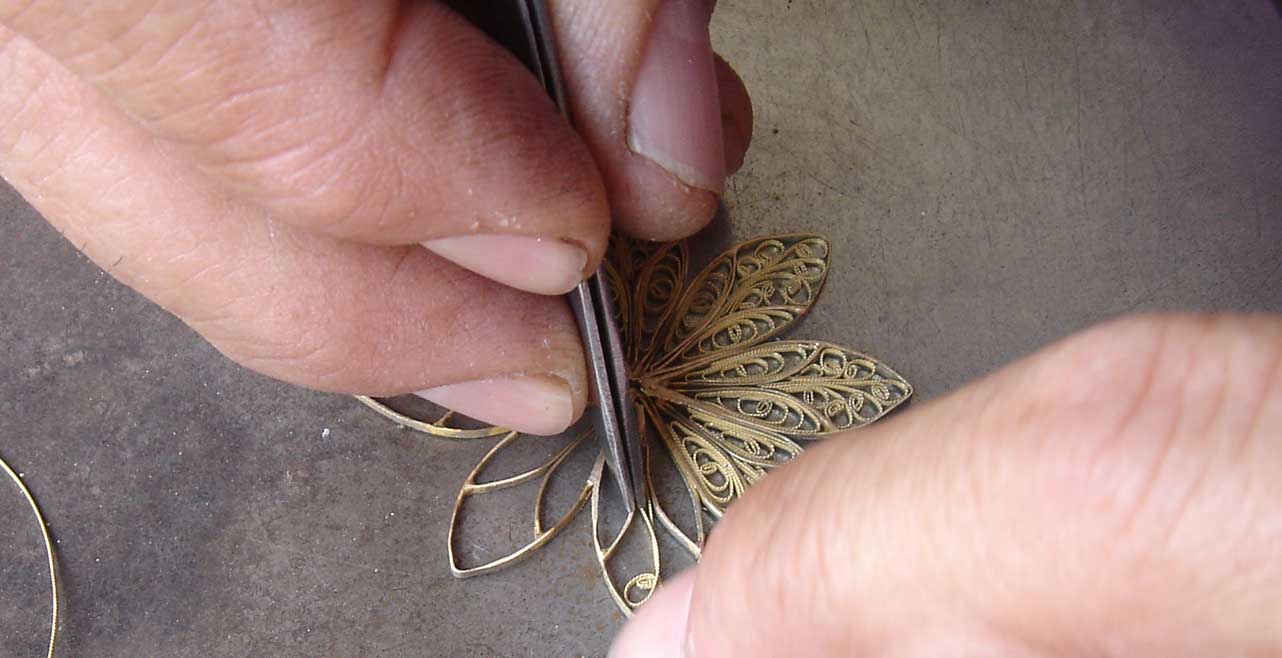Your Cart is Empty

This extraordinary craft, often mistaken for hand engraving, is actually the very opposite. Filigree technique doesn’t involve sculpting or carving; instead it’s the delicate process of weaving together fine, pliable threads of precious metal.
Filigree designs can vary from simple and minimalist geometric forms, through to extremely ornate patterns reminiscent of silky feathers and intricate spiders’ webs. Small metal wires, soldered together, link the patterns together to create larger pieces.

The word is rooted in my very language, from the Spanish word filigrana, which means to spin the grain or fibre and the skill has an impressively long pedigree, dating back thousands of years. The unearthing of ancient jewellery worn by the ancient Greeks, Etruscans and Mesopotamians confirms it as one of those timeless trends that is still as popular now as it was among the fashionistas of 3000 BC.
Embraced by lots of different cultures, from India and Egypt, to the Mediterranean and Northern Europe, this ancient art form became particularly popular here around the turn of the century. The Edwardians were big fans and the fashionably feminine ladies of the time frequently adorned themselves in light and flowy lace-like filigree designs.
Take a wander through any antique jewellery market today and you will almost certainly find examples dating back to this period, as well as a lot of Art Deco pieces too. Filigree from this particular era incorporated tiny cut outs and had a much more statement-making, geometric feel. I once found an exquisite little filigree butterfly, meticulously made in silver, nestled amongst some badly made fakes at a flea market. Ever since, filigree has been the source of inspiration for so many of my designs.

My love affair with authentic filigree means I insist on giving my own creations authenticity by using only skilled master craftsmen to bring them to life. For me it feels more authentic that way and my collections can feel fresh and relevant, without losing that unmistakably vintage, folkloric feel.
Designing filigree jewellery feels like you are drawing with a metal wire instead of a pencil. It’s such a versatile technique and the end result has an unmistakably handcrafted feel.
Filigree jewellery can’t be cast or made from a mould. Every piece is unique and carries the personality and hallmark of the person who created it.
The Arabel Lebrusan Filigree Collection, from £50
The Filigree Rosette Bangle, £525
